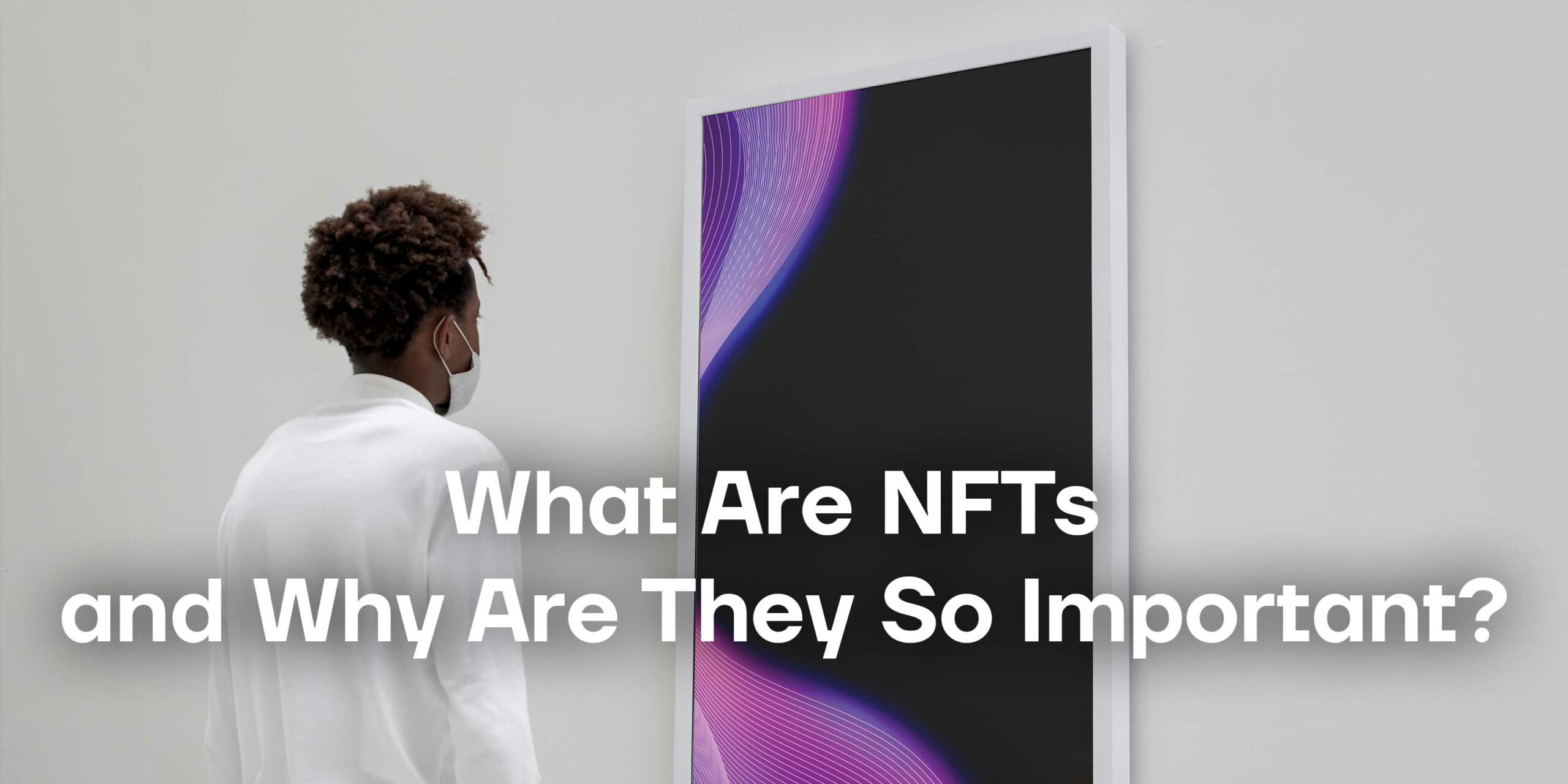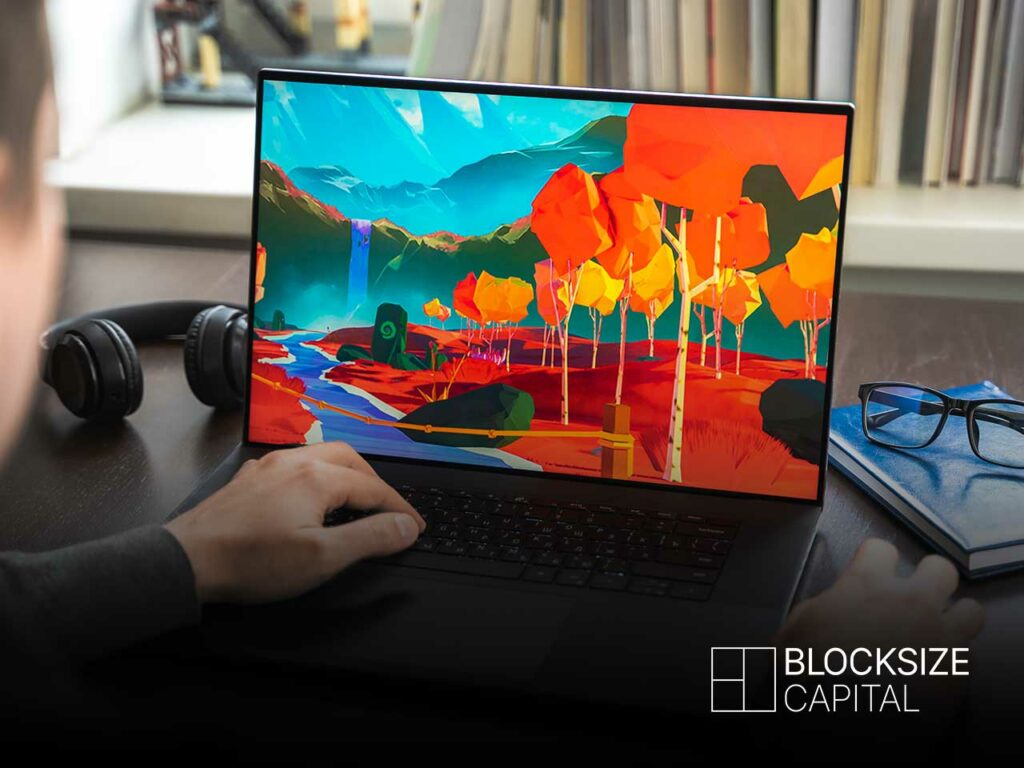What Are NFTs and Why Are They So Important?

by Dragan Djekov
NFTs have recently taken the world by storm. Regardless of whether they are a part of a clever investment strategy or bought into because of their recent publicity, non-fungible tokens, or NFTs have arguably been one of the most exciting developments and use cases of blockchain technology.
But what exactly is an NFT? Why are global brands and celebrities turning to NFTs and NFT content creators at this very moment? And why do people believe that NFTs are going to change the way investments are made forever?
Let us take a closer look.
NFTs explained
Although NFTs have been around since 2014, there has been a huge increase in supply and demand of the collectibles at the beginning of 2017, concluding a total investment of around 200 million dollars up until now.
To begin with, NFTs can be defined as digital assets representing objects like art, music, videos, virtual avatars, and collectibles in general. Most of the time NFTs are sold or bought online with cryptocurrency and have a similar underlying software technology compared to most of the currently existing cryptocurrencies.
NFTs have certain attributes making them unique, with regard to the development of blockchain technology:
Firstly, and as opposed to how we know and use cryptocurrencies, NFTs are non-fungible, which means that there can only be one specific owner of an NFT at a time and there is no fixed and equal value between different kinds of collectibles. While cryptocurrencies are equal in value and thus serve as a perfect metric for digital transactions, the value of an NFT is rather based on scarcity and ownership as well as cultural relevance of the collectible itself making it nearly impossible to exchange one NFT for another based on its value.
NFTs are mostly either produced as one-of-a-kind or as a part of a very limited-edition collectible with unique identifying codes (sometimes even an artist’s signature) included in the metadata of the NFT, serving as a digital built-in authentication and proof of ownership.
In summary, NFTs are unique and rare collectibles developed on and embedded in blockchain software technology with their most basic functionality being an included digital proof of ownership.
But what other use cases and functionalities are lying within the scope of NFTs today?

NFT use cases: art, gaming, community building, and the metaverse
Although NFTs are primarily bought and sold on platforms like OpenSea, Rarible, or platforms on cryptocurrency exchanges like the Binance NFT marketplace, artists and content creators behind the collectibles have significantly more independence compared to art like paintings being sold in a gallery or auction house, for instance.
On top of being more independent from sales structures like curators or exhibitions and more freedom gained with regard to the choice of the marketplace or pricing, artists also have the opportunity to program royalties into the NFT, so that the artist can gain future profits from each and every sale of a collectible instead of just being rewarded for the initial sale. This poses as one of the main advantages for an artist’s proceeds compared to the physical art industry.
NFT art is also being used for charity, as numerous brands like Charmin, or Taco Bell have been raising funds for a good cause with the sale of NFTs.
Taking a step back, the vast potential of NFTs and their use cases is also currently being emphasized by the gaming industry with significance for the future creations in the Metaverse (read more about the Metaverse in one of our latest articles here).
For instance, “speaking at an earnings call, Andrew Wilson, CEO of major video game company Electronic Arts (EA), said that NFTs and play-to-earn games are the gaming industry’s future even though it’s still early to figure out how that would work.”¹
As opposed to EA, which up until now has not been actively engaging in the creation and sales of NFTs and in-game digital assets, there have been companies and games such as Sandbox, Axie Infinity, Sorare, and many others that have been successfully utilizing the concept of NFTs integrated into gaming surfaces, enabling their users to receive rewards (play-to-earn) or stake value by playing.
In-game digital assets are hereby also connected to real-life value, although – as we mentioned earlier – the sale of an NFT is rather subject to another individual’s interest and market demand based on cultural relevance.
Another main use case of NFTs is the community that is building up around their creation and sales. Not only as part of awareness incentives for brands and companies but rather for the collectors and creators themselves, the community building connected to a limited run of NFTs bears the opportunity for a significant increase in exposure, as well as revenue.
For collectors and artists in the NFT art space, as well as for the NFT gaming industry and its gamers alike, providing interesting rewards and participation in NFT collections and blockchain technology, in general, can be described as a new age of art and gaming. Also taking into consideration that some metaverses already integrated the option of wearing (and showcasing) NFTs in-game, there are more and more functionalities being developed.

What else can we expect from NFTs in the future?
With vast increases in user, collector, and artist numbers participating in the creation of NFTs, as well as gaming platforms being built around digital in-game rewards and an ever-expanding Metaverse, the scope and application of NFTs, and also blockchain technology, in general, is expected to grow exponentially.
The significance of NFTs, whether for investments, cultural affection, or merely for entertainment is also equivalently based on the development of concepts like DeFi and the Metaverse. NFTs provide a wide variety of options for individuals interested in participating in these blockchain-based worlds of art, gaming, and more, as well as investors taking a closer look at how growing communities and the “meme-culture” can turn digital assets into profitable long-term financial investments.
NFTs can be regarded as the next logical development in the realms of blockchain applications, but more than being just a fad, they are undeniably going to provide users with more incentivization and a broader range of applications on the blockchain.
At Blocksize Capital we are actively following the newest developments in the fintech world, and we are striving to help institutional investors master the challenges of the new digital capital markets. With us by your side, you will always have the right, trustworthy partner for a trading solution that gives you an-easy-and-reliable access to an infrastructure for all your digital asset trading needs. Get in touch with us now and let us empower your business to stay ahead of the market.
¹ https://cointelegraph.com/news/nfts-and-play-to-earn-are-future-of-gaming-industry-says-ea-boss
Sources:
https://www.theverge.com/22310188/nft-explainer-what-is-blockchain-crypto-art-faq
https://www.forbes.com/advisor/investing/nft-non-fungible-token/
https://www.creativebloq.com/features/what-are-nfts
https://www.bbc.com/news/technology-59167668
https://cointelegraph.com/news/nfts-and-play-to-earn-are-future-of-gaming-industry-says-ea-boss
